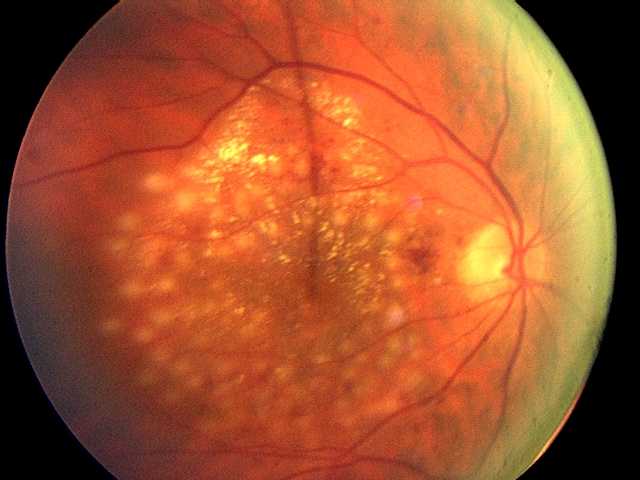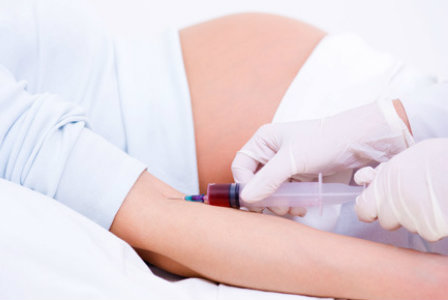Garlic extract could help cystic fibrosis patients fight infection
|
|
A chemical found in garlic can kill bacteria that cause life-threatening lung infections in people with cystic fibrosis, research suggests.
The study is the first to show that the chemical - known as allicin - could be an effective treatment against a group of infectious bacteria that is highly resistant to most antibiotics.
Allicin is produced naturally by garlic bulbs to ward off a closely-related group of plant pathogens found in soil and water habitats. In the 1980s, the bacteria - known as the Burkholderia cepacia complex (Bcc) - emerged as a cause of serious and transmissible lung infections in people with cystic fibrosis.
Measures to limit the spread of Bcc infections among people with cystic fibrosis have brought the number of cases down considerably. However, current therapies available to treat infections - that are potentially fatal - are limited and require the use of combinations of three to four antibiotics at a time.
Your privacy online: Health information at serious risk of abuse

|
There is a significant risk to your privacy whenever you visit a health-related web page. An analysis of over 80,000 such web pages shows that nine out of ten visits result in personal health information being leaked to third parties, including online advertisers and data brokers.
This puts users are risk for two significant reasons: first, people’s health interests may be publicly identified along with their names. This could happen because criminals get ahold of the information, it is accidentally leaked, or data brokers collect and sell the information. Second, many online marketers use algorithmic tools which automatically cluster people into groups with names like “target” and “waste”. Predictably, those in the “target” category are extended favorable discounts at retailers and advance notice of sales. Given that 62 percent of bankruptcies are the result of medical expenses, it is possible anyone visiting medical websites may be grouped into the “waste” category and denied favorable offers.
For individuals, this means profiles are built based on web page visits, potentially resulting in someone being labeled a commercial risk due to the fact that they have used a site like WebMD.com or CDC.gov to look up health information for themselves, a family member, or a friend. Given that data brokers are free to sell any information they collect regarding visits to health websites, those visiting such sites are potentially at risk of being discriminated against by potential employers, retailers, or anybody else with the money to buy the data.
UW research shows sensor technology may help improve accuracy of clinical breast exams

|
Sensor technology has the potential to significantly improve the teaching of proper technique for clinical breast exams (CBE), according to a new study by researchers at the University of Wisconsin School of Medicine and Public Health.
The results of the study were published in a correspondence today in the New England Journal of Medicine.
Carla Pugh, director of patient safety and education at the University of Wisconsin Hospital and Clinics and principal investigator of the study, says the use of sensors allows a level of critical analysis unavailable to clinicians until recently.
“Variations in palpable force used during a CBE cannot be reliably measured by human observation alone,” Pugh says. “Our findings revealed that 15 percent of the physicians we tested were using a technique that put them at significant risk of missing deep tissue lesions near the chest wall. This research underscores the potential for sensor technology to be used not only to improve clinical performance, but to also allow for objective evidence-based training, assessment and credentialing.”
Joslin researchers find drugs are effective for diabetic macular edema in new trial

|
In the first clinical trial directly comparing three drugs most commonly used to treat diabetic macular edema, researchers found all were effective in improving vision and preventing vision loss. However, one drug, aflibercept, provided greater improvement for people with more severe vision loss when treatment was initiated. The trial was conducted by the National Eye Institute Diabetic Retinopathy Clinical Research Network (DRCR.net) including researchers from Joslin Diabetes Center. The results appeared in the February online edition of the New England Journal of Medicine.
Diabetes is a significant risk factor for developing eye diseases. The most common diabetic eye disease and a leading cause of blindness is diabetic retinopathy, which is caused by elevated blood sugar levels damaging the blood vessels of the retina and affects approximately 7.7 million Americans. About 750,000 Americans with diabetic retinopathy have diabetic macular edema (DME) in which fluid leaks into the macula, the area of the retina used when looking straight ahead. The fluid causes the macula to swell, blurring vision. “DME is the leading cause of moderate vision loss in working-age adults with diabetes. With the rate of diabetes increasing dramatically worldwide, many individuals will be at risk for vision loss from diabetic eye complications and DME is a major global health concern,” says Jennifer K. Sun, M.D., M.P.H., a member of the study research team and writing committee, and an Investigator in the Section on Vascular Biology, an ophthalmologist in Beetham Eye Institute at Joslin and an Assistant Professor at Harvard Medical School.
In an earlier study, Joslin researchers reported that VEGF, a major growth factor for blood vessels, is elevated in the eye fluids of patients with proliferative diabetic retinopathy and DME, causing leakage and the growth of abnormal blood vessels.
Drug improves measures of genetic disease that affects liver, spleen

|
Among previously untreated adults with Gaucher disease type 1, a genetic disease in which there is improper metabolism due to a defect in an enzyme, treatment with the drug eliglustat resulted in significant improvements in liver and spleen size hemoglobin level, and platelet count, according to a study in the February 17 issue of JAMA.
Gaucher disease type 1 is characterized by enlargement of the spleen and liver, anemia, low blood platelets, chronic bone pain, and the failure to grow properly. Untreated Gaucher disease type 1 is a chronic and progressive disorder associated with disability, reduced life expectancy, and, in some patients, life-threatening complications. The current standard of care is enzyme replacement therapy, which requires lifelong intravenous infusions every other week. A safe, effective oral therapy is needed, according to background information in the article.
Pramod K. Mistry, M.D., Ph.D., F.R.C.P., of the Yale University School of Medicine, New Haven, Conn., and colleagues randomly assigned 40 untreated adults with Gaucher disease type 1 to receive eliglustat (twice daily; n = 20) or placebo (n = 20) for 9 months. Eliglustat is a novel oral medication, which showed favorable results for patients with this disease in a phase 2 trial. This phase 3 trial was conducted at 18 sites in 12 countries.
HPV vaccination not associated with increase in sexually transmitted infections

|
A barrier to human papillomavirus (HPV) vaccination has been the concern that it may promote unsafe sexual activity, but a new study of adolescent girls finds that HPV vaccination was not associated with increases in sexually transmitted infections (STIs), according to an article published online by JAMA Internal Medicine.
Nearly one-quarter of U.S. females between the ages 14 and 19 and 45 percent of women between the ages of 20 and 24 are affected by HPV. The HPV vaccination can prevent cervical, vulvar and vaginal cancers and genital warts caused by certain HPV strains. Still, HPV vaccination rates remain low in the United States and, by 2013, only 57 percent of females between the ages of 13 and 17 had received at least one dose, whereas only 38 percent had received all three recommended doses, according to the study background.
Anupam B. Jena, M.D., Ph.D., of Harvard Medical School, Boston, and coauthors used a large insurance database of females (ages 12 to 18) from 2005 through 2010 to examine STIs among girls who were vaccinated and those who were not.
Study identifies 8 signs associated with impending death in cancer patients

|
Researchers at The University of Texas MD Anderson Cancer Center have identified eight highly specific physical and cognitive signs associated with imminent death in cancer patients. The findings, published in the journal Cancer, could offer clinicians the ability to better communicate with patients and families. They may also guide both the medical team and caregivers on complex decision making, such as discontinuation of tests and therapy, plans for hospital discharge and hospice referral.
Previous studies in end-of-life care have focused on physicians prognosticating better. However, according to David Hui, M.D., assistant professor, Palliative Care and Rehabilitation Medicine, research on how to tell if a patient has entered the final days of life has been minimal. Knowing with a high degree of confidence that death is imminent could have significant implications for clinical practice. It may also help families and caregivers make more informed decisions.
“In the past, studies trying to understand the signs associated with impending death were conducted in people who were recognized as dying, so there’s a potential bias built into this model. With our study, we observed a list of signs in patients from the time they were admitted to the palliative care unit. They were observed systematically, twice a day, without knowing if the patient would die or be discharged,” says Hui, the study’s corresponding author.
BGI study confirms accuracy of its NIFTY in nearly 147,000 pregnancies

|
BGI has published a study tracking the clinical performance of its whole genome sequencing-based non-invasive prenatal test (the NIFTY® test) in nearly 147,000 pregnancies, the largest such study to date. The results showed high sensitivity and specificity and no significant difference between high-risk and low-risk pregnant women.
The study, published in the journal Ultrasound Obstetrics and Gynecology, reported on 146,958 samples from 508 medical centers in mainland China, which were collected between early 2012 and mid-2013 for trisomy 21, 18, and 13. Although NIFTY® measures other chromosomal abnormalities, these results were not included in the study.
According to the study’s results, NIFTY® identified 1,578 trisomy-positive and 145,380 negative samples. Comparing the results with follow-up confirmatory invasive testing, or by tracking patients’ eventual pregnancy outcomes, the study team then calculated the false positive (FPR) and false negative rate (FNR) for each tested trisomy, and the overall sensitivity, specificity, and positive predictive value (PPV).
Hepatitis C more prevalent than HIV/AIDS or Ebola yet lacks equal attention

|
More than 180 million people in the world have hepatitis C, compared with the 34 million with HIV/AIDS and the roughly 30,000 who have had Ebola. Yet very little is heard about the hepatitis C virus (HCV) in the way of awareness campaigns, research funding or celebrity fundraisers.
One of the global regions highly affected by hepatitis C is West Africa. In developed countries, hepatitis C, a blood-borne disease, is transmitted through intravenous (IV) drug use. “In West Africa, we believe that there are many transmission modes and they are not through IV drug use, but through cultural and every day practices,” says Jennifer Layden, MD, PhD principal investigator on a study recently published in the journal Clinical Infectious Diseases. “In this study, tribal scarring, home birthing and traditional as opposed to hospital based circumcision procedures, were associated with hepatitis C infection in Ghana.”
The study was conducted by HepNet, an international multidisciplinary group of physicians and scientists. “The other important finding was that a high percentage of individuals who tested positive for HCV had evidence of active infection,” says Layden. “This illustrates the need for treatment.”
Discovering the source of the disease and a target population, she says, will aid in the next step of the research: how to protect and prevent the disease in Ghana.
Physician guidelines for Googling patients need revisions

|
With the Internet and social media becoming woven into the modern medical practice, Penn State College of Medicine researchers contend that professional medical societies must update or amend their Internet guidelines to address when it is ethical to “Google” a patient. “As time goes on, Googling patients is going to become more and more common, especially with doctors who grew up with the Internet,” says Maria J. Baker, associate professor of medicine. Baker has dealt with the question first hand in her role as a genetic counselor and medical geneticist. In a case that inspired her recent paper in the Journal of General Internal Medicine, a patient consulted her regarding prophylactic mastectomies. The patient’s family history of cancer could not be verified and then a pathology report revealed that a melanoma the patient listed had actually been a non-cancerous, shape-changing mole.
Turning to the Internet, Baker found evidence of the patient capitalizing on being a cancer victim for a cancer she did not have. The question, Baker says, is in what circumstances is it appropriate for a doctor to research a patient using online search engines? “Googling a patient can undermine the trust between a patient and his or her provider, but in some cases it might be ethically justified,” Baker says. “Healthcare providers need guidance on when they should do it and how they should deal with what they learn.”
With regard to future guidelines, Baker and her co-authors suggest 10 situations that may justify patient-targeted Googling:





